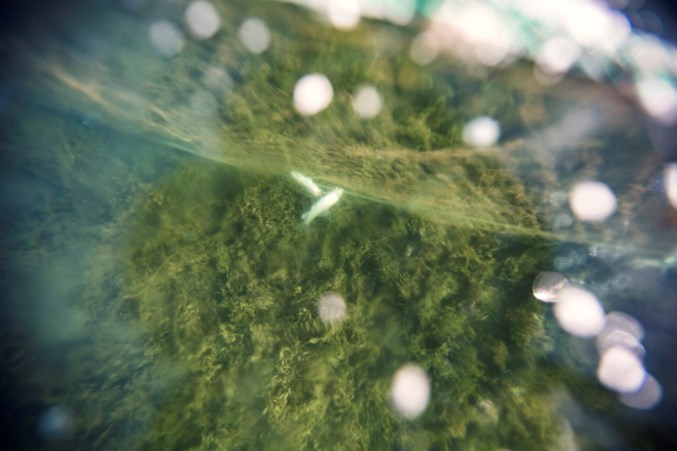BANFF – Nets to catch fish have been put in Johnson Lake for the winter, as work to eliminate whirling disease from the body of water continues.
The removal of infected fish from Johnson Lake aims to prevent the spread of the disease into the Upper Cascade watershed, which is home to threatened westslope cutthroat trout.
The 15-hectare lake remains open for the winter, but Parks Canada has issued a warning that the uneven ice surface from gillnets, buoys or natural cracking can be a tripping hazard to skaters.
“We do have lines secured to the shoreline and nets will bubble up to the surface,” said Bill Hunt, resource conservation manager for Banff National Park.
“This is a popular lake for pond skating and last year there were a couple of instances where people were tripping on ropes.”
Johnson Lake was the first place whirling disease was detected in Canada after being discovered in 2016 and confirmed by the Canada Food Inspection Agency.
Since then, whirling disease has been confirmed in creeks and rivers throughout Alberta, including the Bow, Oldman, North Saskatchewan and Red Deer watersheds.
Whirling disease can affect several fish species, including bull trout and westslope cutthroat trout, which are listed as species-at-risk, as well as rainbow trout, mountain whitefish, brown and brook trout.
Named for the circular swimming patterns of infected fish, whirling disease is not spread directly between fish, but rather a parasite is spread through contact between fish and a freshwater worm.
Although nearby Two Jack Lake and Lake Minnewanka are currently free of whirling disease, there are concerns that birds such as loons and ospreys, or boaters, swimmers and anglers, could transfer the disease.
Any object that comes into contact with water or mud can potentially transmit whirling disease, as people move equipment from one recreational area to another.
If fish living in Lake Minnewanka were to become infected, there are concerns they could move up into the entire Cascade River watershed and come into contact with westslope cutthroat trout.
“The Upper Cascade has some of the only remaining pure populations of westslope cutthroat trout,” said Hunt.
In 2017, a total of 15,000 fish were removed from Johnson Lake and the upstream wetland. Total numbers for this year’s program to eliminate the disease from Banff National Park haven’t been calculated yet.
Parks staff will collect the dead fish caught in the gillnets once the lake thaws in the spring.
The next steps will be determined based on what they find – whether it’s susceptible trout or native longnose suckers that aren’t affected by whirling disease.
“We’ll evaluate based on what we find in the nets, though a lot is hard to tell because fish can be badly decomposed,” said Hunt.
“It may mean another season with the nets, or more work in summer, or potentially looking at water levels of the lake.”
Meanwhile, gillnets haven’t been put in areas of the lake that open up early in spring after nine dead ducks were founded entangled in them last spring.
“What we’ve done is avoid putting nets in the two bays near the beach,” said Hunt. “We know those areas open up early in spring and waterfowl come there.”




